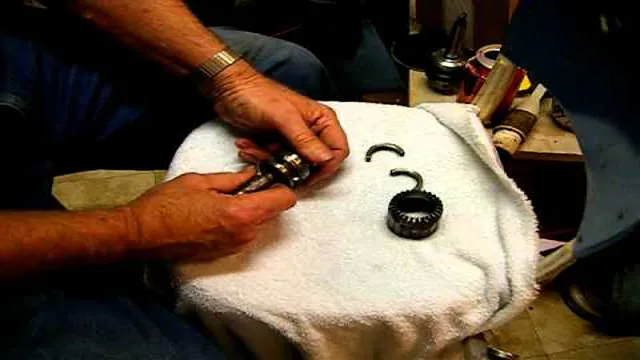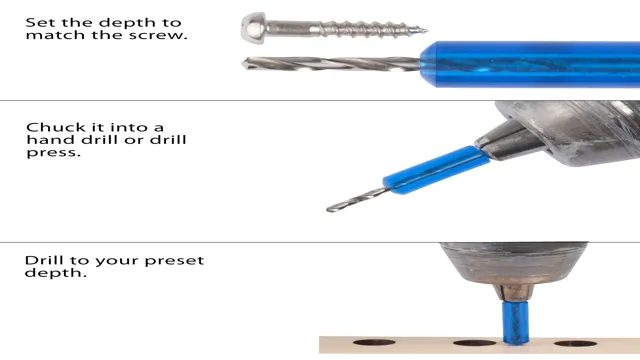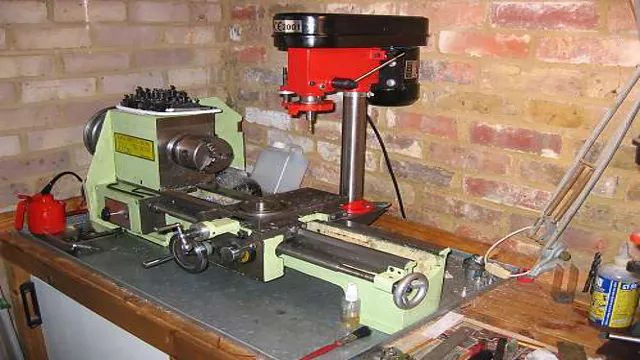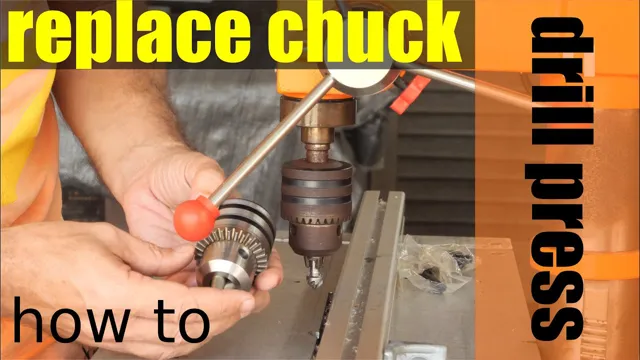How to Put a Drill Bit in a Drill Press: A Step-by-Step Guide for Beginners
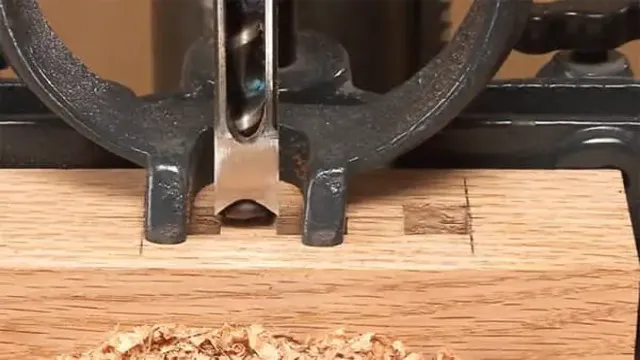
Putting a drill bit in a drill press may seem like a daunting task, especially if you are new to the world of power tools. But fear not, with a few simple steps, you’ll be able to master this skill in no time. Whether you’re a DIY enthusiast or a professional carpenter, having the ability to efficiently and quickly change out drill bits is an essential skill that can save both time and money.
In this blog post, we’ll discuss step-by-step instructions on how to put a drill bit in a drill press, so you don’t have to struggle with this process ever again. So, let’s get started, shall we?
Identify the Correct Drill Bit
Have you ever struggled with finding the right drill bit for your drill press? It can be frustrating to have a project ready to go, only to find out you don’t have the right bit for the job. To avoid this issue, you should first understand what type of drill bit you need. Do you need a standard twist bit or a spade bit? Perhaps a forstner bit or a brad-point bit would be more suitable? Once you’ve identified the correct bit, it’s time to put it in the drill press.
Make sure the drill is turned off and the chuck key is inserted. Insert the bit with the appropriate shank size and tighten the chuck jaws using the key. Finally, give the bit a tug to ensure it is secured properly.
Following these simple steps will allow you to confidently tackle any project with the right drill bit in your drill press.
Check the Chuck Size
When it comes to drilling, one of the essential factors to consider is the chuck size. The chuck is the part of the drill that holds the drill bit in place. If the chuck size is not suitable for the drill bit, it can cause the bit to slip or become loose, which can lead to an uneven hole or even damage the material being drilled.
To ensure that the chuck size is correct, always check the specifications of the drill bit and compare it to the maximum size capacity of the chuck. Additionally, consider the material being drilled and select a drill bit that is suitable for the job. By identifying the correct drill bit and choosing a chuck size that matches, you can ensure a successful and efficient drilling experience.
So, before you start drilling, take a moment to check the chuck size and select the appropriate drill bit for the job at hand.
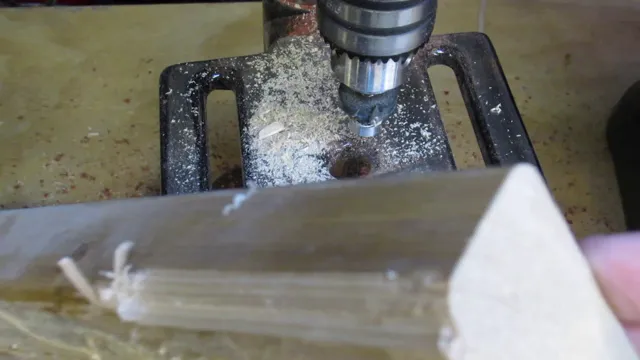
Insert the Drill Bit into the Chuck
Before inserting the drill bit into the chuck, it is essential to identify the correct one to use. Different drill bits are made to drill through specific materials, such as wood, metal, or concrete. Using the wrong bit can cause damage to both the drill and the material being drilled, resulting in poor results or dangerous situations.
To identify the correct drill bit, first determine the material you will be drilling into. Then, consult the drill bit packaging or do some research to find the correct bit size and type for the material. Once you have the correct bit, it’s time to insert it into the chuck.
First, loosen the chuck by turning it counterclockwise. Then, insert the drill bit into the chuck until it is snugly in place. Tighten the chuck by turning it clockwise, making sure the bit is secure.
It’s important to note that the bit should be inserted straight into the chuck to avoid damaging the bit or chuck. Also, make sure to tighten the chuck enough so that the bit won’t slip while in use but not so tight that it damages the bit. Identifying the correct drill bit and inserting it into the chuck may seem like a simple task, but it is crucial to ensure the safety and effectiveness of your drilling project.
Take the time to do it right, so you can drill with confidence and achieve the results you desire.
Secure the Drill Bit
Putting a drill bit in a drill press may seem like a simple task, but it’s essential to do it correctly to ensure your safety and prevent damage to the tool. To begin, you need to secure the drill bit in the chuck of the drill press. First, loosen the chuck by twisting it counterclockwise.
Insert the drill bit into the chuck and make sure it’s straight. Then, tighten the chuck by turning it clockwise until the bit is firmly held in place. It’s crucial to ensure the bit is properly secured before you start drilling, as a loose bit can result in injury or damage to your workpiece.
Remember, always double-check that the bit is tightly secured before turning on your drill press. With these steps, you can easily and safely put a drill bit in your drill press and start your project with confidence.
Tighten the Chuck
Tightening the chuck is an essential step in securely attaching the drill bit to your drill. Without a properly tightened chuck, the drill bit can loosen during use, causing it to slip or even fly out of the drill, potentially causing injury or damage. To ensure the chuck is tight, first, make sure the drill is unplugged or the battery is disconnected.
Then, insert the drill bit into the chuck and use the chuck key to tighten the jaws of the chuck around the bit. To test if the chuck is secure, try to move the drill bit back and forth. If there is any movement, tighten the chuck further.
Make sure not to overtighten the chuck, as this can damage the chuck or the drill bit. By taking the time to properly secure the drill bit, you can ensure safe and efficient use of your drill.
Check for a Secure Fit
When it comes to working with power tools, safety should always be a top priority. One important aspect of this is ensuring that your drill bit is secure and won’t come loose while in use. To do this, start by selecting the correct size bit for the project you’re working on.
Then, insert the bit into the chuck of the drill, making sure it’s straight and centered. Tighten the chuck until the bit is held firmly in place, but be careful not to over-tighten it as this can damage both the bit and the drill. A loose bit can not only cause damage to your project but also pose a hazard to your safety.
By taking the extra time to ensure a secure fit, you can work confidently and safely knowing your drill bit won’t come loose.
Adjust the Speed and Depth
When it comes to using a drill, it’s important to adjust the speed and depth accordingly. But before you start, make sure the drill bit is secure. A loose drill bit can not only damage the surface you’re drilling into, but it can also cause injury to yourself.
So take a moment to ensure the drill bit is firmly in place before proceeding. Once you’ve checked that the drill bit is secure, you can adjust the speed and depth to match the task at hand. Most drills have adjustable speed settings, which can range from slow and steady to fast and furious.
Use a slower speed for delicate tasks where precision is key, and a faster speed for tougher projects that require more power. Similarly, depth adjustment is crucial when it comes to drilling. Make sure you set the depth stop to the correct level to prevent drilling too deep or not deep enough.
This is particularly important when drilling into wood or other materials where precision is important. By adjusting the speed and depth of your drill, you can ensure that your project is completed efficiently and accurately. And don’t forget to always wear proper safety gear when using a drill – safety glasses, gloves, and ear protection can go a long way in preventing injury.
Additional Tips
When it comes to putting a drill bit in a drill press, there are a few additional tips that can make the process smoother and safer. Firstly, always make sure the drill press is turned off and unplugged before attempting to change the bit. This may seem obvious, but it’s an important safety precaution that should never be overlooked.
Secondly, when tightening the chuck around the new bit, make sure to use the proper amount of force. Too much force can damage the bit, while too little force can cause it to slip out during use. Lastly, always double-check that the bit is securely tightened and properly aligned before starting any drilling.
By following these additional tips, you can ensure a successful and safe drilling experience with your drill press.
Clean the Drill Bit
When using a drill, it’s important to ensure that the bit is clean and free of any debris. This can help to prevent accidents and ensure that the drill operates smoothly. One way to clean the drill bit is to spray it with a lubricant or degreaser, then wipe it clean with a towel or rag.
Another option is to use a wire brush or sandpaper to remove any stubborn residue. It’s also important to periodically sharpen the drill bit to maintain its effectiveness. By taking the time to properly clean and maintain your drill and bit, you can ensure that it lasts for many years and performs at its best.
So the next time you finish using your drill, take a few extra minutes to properly clean the bit and store it in a safe place for future use.
Practice Safety Precautions
When it comes to practicing safety precautions, there are a few additional tips that can make all the difference. Firstly, always make sure to wear a mask when in public places, especially when you are unable to stay six feet away from others. This not only protects you but also those around you.
Secondly, be aware of commonly touched surfaces, such as doors, handles, and elevator buttons, and sanitize them frequently if you must touch them. Thirdly, avoid touching your face, especially your eyes, nose, and mouth, as this can easily spread germs. Lastly, make sure to wash your hands regularly, especially before eating or touching your face.
These simple precautions can help keep you and those around you safe and healthy.
Conclusion
In conclusion, putting a drill bit in a drill press is like finding the perfect pair of shoes – a match made in heaven. With a few simple steps, you can have your drill press ready to tackle any project, just like a trusty pair of sneakers ready to tackle any adventure. So don’t be afraid to get your hands dirty and drill your way to success!”
FAQs
What is a drill press used for?
A drill press is a machine used to drill holes accurately into materials such as wood, metal or plastic.
How do I properly secure my drill bit in a drill press?
To properly secure a drill bit in a drill press, loosen the chuck by turning the key counterclockwise. Insert the bit into the chuck and tighten it by turning the key clockwise. Be sure to tighten the chuck securely.
Can I use any size drill bit in a drill press?
Generally, a drill press can accommodate different sizes of drill bits as long as they fit into the chuck. However, it is important to check the drill press specifications and limitations before using a larger or longer drill bit.
How do I align my drill bit with the material on the drill press?
To align your drill bit with the material properly, place the material on the drill press table and adjust the height of the table if necessary. Use the built-in guides or markings on the drill press to position and align the material.
What safety measures should I follow when using a drill press?
Some safety measures to follow when using a drill press include wearing appropriate personal protective equipment (PPE) such as safety goggles and gloves, keeping loose clothing and long hair away from the drill bit, and not leaving the machine unattended while in operation.
How do I maintain my drill press?
Regular maintenance of your drill press includes keeping the machine clean and lubricated, checking the belts and pulleys for wear and tear, and ensuring that the chuck is tightened properly. It is also important to follow the manufacturer’s recommendations for maintenance.
Can I use a drill press for other tasks besides drilling?
Yes, some drill presses come with accessories that allow you to perform other tasks such as sanding, mortising, or tapping. However, it is important to follow the manufacturer’s recommendations and limitations when using these accessories.

